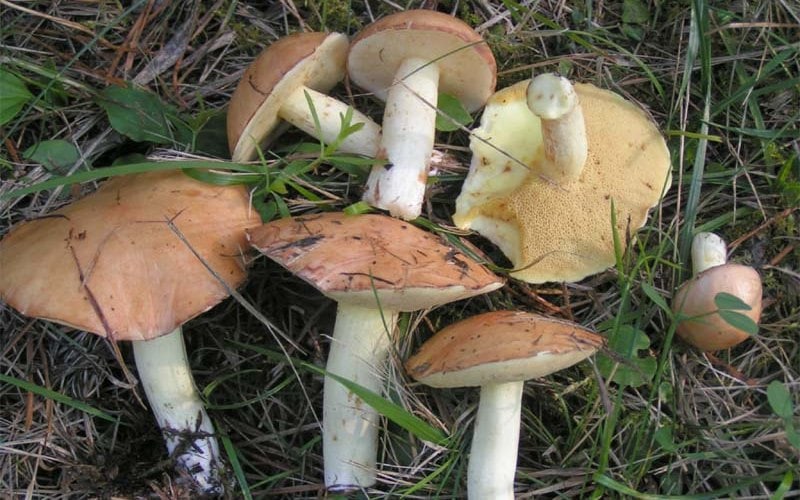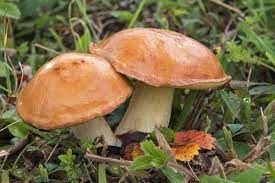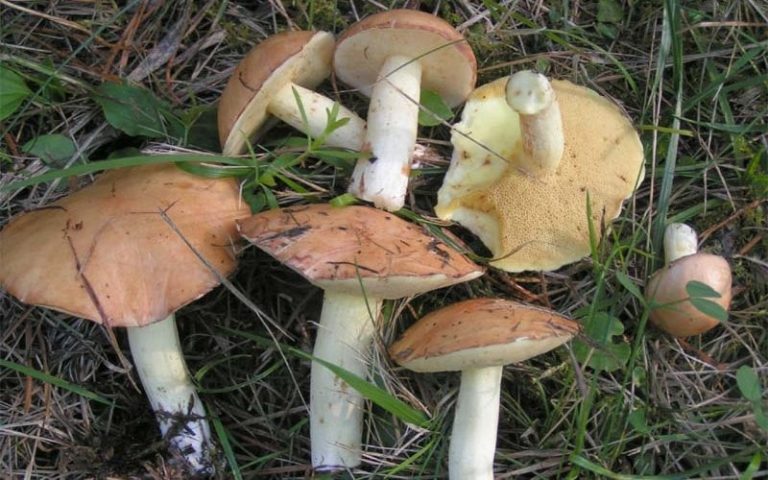It is one of our most popular edible mushrooms. Here we show you how to recognize it, how to prepare it and what risks it entails.
Anyone who likes to hunt mushrooms should have seen the butter mushroom (Suillus luteus) before. Because the butter mushroom is very common in German forests. It grows especially often near pine trees.
Its buttery yellow flesh is responsible for its name. This is surrounded by a slimy shiny cap that doesn’t make the mushroom look particularly appetizing at first glance. In Bavaria, the butter mushroom is therefore also colloquially known as “Rotzer”. The American naming is also based on the slimy appearance of the mushroom. Here the butter mushroom is called ‘Slippery Jack’.
Recognizing and distinguishing butter mushrooms
The main collecting time for the butter mushroom is between July and October. In contrast to many other mushrooms, it is relatively easy to identify the butter mushroom:
The butter mushroom has a slimy and chocolate brown cap.
The diameter of the hat is six to twelve centimeters.
The cap peels off easily to reveal the buttery yellow flesh underneath.
When you collect butter mushrooms, you should always cut them off about an inch above the ground so they can grow back. You should blot the slime layer around the mushroom with a cloth immediately after picking the mushroom. This will prevent bacteria and mold from settling on your mushroom. At home you can then wash your mushrooms thoroughly and remove the slime layer completely with a knife.
Why not everyone can tolerate butter mushrooms
The butter mushroom is not poisonous, but can cause intolerance reactions in allergy sufferers. If you suffer from a mushroom allergy, gastrointestinal problems with vomiting, diarrhea and stomach pain can be the result. Some of the proteins contained in the butter mushroom are to blame for this. These are actually harmless to our body, but are sometimes mistakenly identified as pathogens by the immune system. The subsequent immune reaction of our body are then the mentioned disease symptoms.
Even if you are not allergic to the butter mushroom, you should not consume it excessively. The butter mushroom (like many other types of mushrooms) stores mercury from the environment. Even if the soil only has a low mercury content, there are increased mercury concentrations in the mushroom cap in particular. You should therefore not consume more than 300 grams of butter mushrooms per week.
Prepare butter mushrooms: Fry and serve with bread dumplings
The butter mushroom has a mild taste and a slightly bitter acid note. It tastes delicious if you sear it in hot olive oil with a little salt and pepper. You can also bread it with egg and flour and then fry it in hot oil. This gives you a nice contrast between the crispy crust and tender mushroom flesh. Herbs such as parsley, tarragon and coriander go particularly well with the mushroom.
A mushroom ragout made from various forest mushrooms, which is typically served with bread dumplings, is popular in Bavaria:
Fry the mushrooms in some oil.
Just before the mushrooms are done, add shallots and garlic.
Deglaze the mushrooms with some white wine and let the alcohol evaporate.
Now add a good dash of cream and let the sauce cook until it has a thick consistency.
Season your mushroom ragout with sugar, pepper, salt and parsley to taste.

